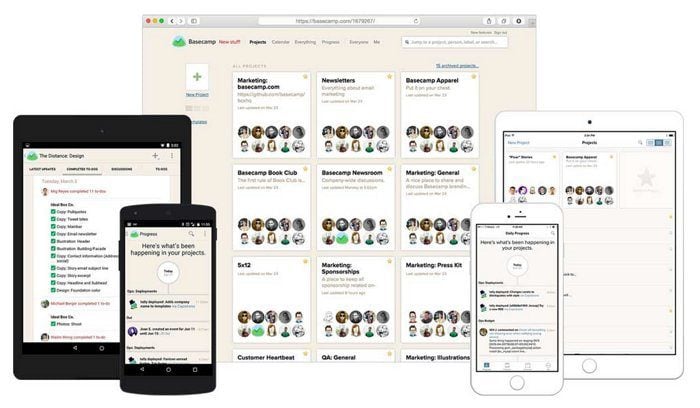As a freelance WordPress developer or designer, your goal is to land the best clients. Nothing is more rewarding than successfully finishing a project on time and getting paid equally promptly. Hitch-free projects lead to happy clients and a great chance of a lucrative long-term relationship.
Things don’t always go so smoothly though. As with anything in life, there are pitfalls to avoid and dangers to dodge. Even the best clients can occasionally create problems which can result in interrupted workflow, deadline creep, or even delayed or disputed payments.
As the old saying goes, an ounce of prevention is worth a pound of cure. There are concrete steps you can take as a freelancer to prevent client problems before they even occur. In this article, we’ll run through seven key methods you can use to ensure successful projects are delivered and nip potential client issues in the bud.
1. Agree to a Price Before the Work Begins
At the start of any project, your client will be super-excited to kick things off. Everything you propose, be it a new WordPress theme for their site or something as simple as a logo, sounds like a dream to them. But, once the work is done and the invoice rolls in, problems can arise.
There are some potential clients out there who simply want to short-change a freelancer. They want a ridiculous amount of work for a derisory price. These clients should be avoided from the outset.
You can also risk running into problems with perfectly reasonable clients, however. If they’re surprised at the final bill and balking at charges they did not expect, trouble can easily ensue. Before you know it, you could be looking at weeks (or even months) of unnecessary conflict as you struggle to get the payment you deserve.
Avoid this scenario entirely by making sure you and client have agreed to a firm price before any work starts. Draft up a statement of work, or contract, with the details of your job and all applicable fees. Be sure to get written sign-off from the client on all potential costs before you start working.
Whether you’re charging a flat price or hourly rate, the client needs to know what it will end up costing them. If this is documented at the outset, they cannot argue once the work is delivered. Make provision for unforeseen costs arising in the contract and detail how they should be handled on both sides.
You’ll also want a reliable system for tracking your time during the project. This could be as simple as a spreadsheet or you could use handy online tools like Toggl to keep things organized. Make sure everything is listed clearly on the invoice once it’s time to send.
Seasoned freelancers will have systems in place for this already, but newcomers need to get things organized as soon as possible. Take the extra time to create template versions of key documents (scope of work contracts, hourly spreadsheet, and invoices) and have them ready when you land your first job. Review these documents after each completed job to see if there are changes that need to be made.
Freelancers Union have an excellent online contract creator you can use and freelance invoice templates are widely available online to help you get started.
2. Set Realistic Deadlines
Whether you’re working as a freelancer for a client or are on staff at a company, every project has deadlines. These, believe it or not, are actually good things. They help you to manage and prioritize your time and keep team members focused over the course of a long project. Be careful, though. Setting too tight a deadline can cause a client to put unnecessary pressure on both you and the work.
Time pressures will always come into play on a project. A client or contact may take too long to get back to you. Clients also sometimes put unexpected heat on to meet their own internal goals. You should keep all this in mind from the outset.
It’s important that you set deadlines you know you can meet or exceed (there’s nothing a client loves more than finishing before a deadline). Everyone involved in the project needs to know when work will be ready for review, be it the final product or updates along the way. This should all be outlined in the initial scope of work or contract, so there’s no confusion.
Setting milestones during the project is a great way to ensure regular feedback on the way to a final deadline. The client will get to give input on the work in progress and it helps keep the project moving along.
When setting deadlines, be realistic with your time. If this is one of many projects you’re undertaking, don’t set too tight a deadline that you know you can’t keep. It might be tempting (especially as a new freelancer) to set close deadlines to land a gig, but in the long run, you’ll regret it.
Managing your time as a freelancer developer or designer is something you get better at as you gain experience. In the beginning, it’s best to err on the side of caution and give yourself ample room. This allows for unexpected delays or challenges on the project that make it take longer than you expected.
What do you when you can’t meet a deadline? Before you agree to work, go over a contingency plan that will kick in should a deadline be passed or in danger of slipping. This could include bringing in other resources, cutting the scope of work, or simply pushing the deadline back. Obviously, the best time to be considering all these contingencies is before the deadline slips rather than afterward.
Scheduling work on a simple calendar app like Google Calendar can help you to visualize your work and set your deadlines. More advanced project management tools like Trello or Basecamp could also be a good fit depending on your workflow.
3. Establish Exactly What Clients Need from You
A client is ultimately hiring you because they either don’t know how to do the work themselves or don’t want to. This sounds super obvious, but the implications are various. Not all clients will know the difference between design and coding, for example; they may be expecting you to deliver work you’re simply not capable of providing.
If the client is unclear on what they’re hiring you for, they’re bound to get confused and upset when something doesn’t work. You may end up dropped from a project simply because their expectations weren’t realistic. Or you might be landed with a project that morphs into a nasty slog as you’re forced to take on much more work than you originally agreed to.
To stop these problems from happening, you need to make your scope of work clear from the outset. Communicate exactly what you are going to do for your client in your contract. Be as specific as possible to avoid confusion (i.e.: installing a WordPress theme, providing SEO support for x number of pages, designing a new logo with y number of revisions). This helps the client understand what they’re paying for, and eliminates unrealistic expectations.
Make sure that contingencies such as revisions and troubleshooting are listed in the contract. Sometimes a client new to WordPress will have trouble making basic changes to a new theme. By all means, be the one to help them or make the changes yourself, just be sure it’s listed in your contract so you can be compensated accordingly.
When designing original graphics for a business, revisions are nearly always necessary. Specify the amount of changes you’re prepared to make in your contract to prevent an endless back and forth between you and the client. Three revisions plus $x dollars for an additional price is a sensible starting point.
In any project, there may be the need to revise your scope of work at some stage. Be prepared for this possibility ahead of time. If you are willing and able to take on more work for the client, make sure they know it’ll cost more or take longer. If it’s not something you’re able to do, be sure you communicate this so they can plan accordingly.
Freelancers Union has a great guide to writing a contract which covers many of the points above with clear examples written in clear and useful language.
4. Anticipate Pushback
Seasoned freelancers have no shortage of stories about difficult clients to swap with each other. Perhaps the most frustrating type of client is the one who doesn’t really know what he needs. This might sound odd to a newcomer, but many clients simply have a general understanding that they need a website/graphic/update but no real inkling as to what form it should take.
This can often lead to problems. You might spend days or weeks on a solution or design only for the client to reject it out of hand. This isn’t necessarily because you did a poor job, it’s because the client has a sense of what they want, but just had a hard time explaining it.

By providing a variety of options for a client, you help them realize what they want. Image by jukaspring / shutterstock.com
A big part of your job is, of course, helping clients articulate their needs. During the early stages of work, provide a variety of options for them to like or veto. Make sure you cover a range of styles or solutions, from simple to complex. This can mean providing demos for different kinds of themes or several mockups of a design.
This will help guide the client towards the solution they originally had in mind. It will also illustrate to them the amount of work you are putting into the project. The attention to detail and commitment to the work that you’re demonstrating will help reassure the client from the outset and keep things moving smoothly.
Sometimes a client will simply reject everything you submit. Be mentally prepared for this and don’t take it to heart. Your goal is to meet their needs, so be flexible with your work and choices.
There are of course also some clients who simply cannot, or will not, be pleased. With these people, you have to be prepared to walk away. This can be painlessly done, so long as you took the precaution of catering for the possibility in advance in your contract.
There are many excellent tools available for sharing and previewing work with clients these days. Classic solutions such as Dropbox and Google Drive go a long way. Github enables developers to keep clients continually in the loop in a highly transparent fashion. Designers have options like Red Pen and Prevue at their disposal. Providing simple staging sites to preview work in context for clients is also increasingly easy thanks to hosting tools from providers such as Flywheel.
5. Provide Frequent Communication
As a freelancer, you’re hopefully spending your work hours wisely and crunching through project solutions in a timely fashion. Your client may not be as dependable, however; you can’t always guarantee that they’ll get back to you on time and delays can throw a serious spanner in the works.
Cut down on the likelihood of this happening by taking the initiative when it comes to communication. Follow up quickly on emails and calls, especially after submitting work that needs approval or feedback. A client, especially a business owner, may well be busy and miss an individual email. Or they can simply drop the ball from time to time. If you’re persistent, they’ll respond.
Frequent communication also keeps everyone on the same page. This is especially important on projects with multiple team members. Staying in communication ensures you’re not duplicating efforts or getting wires crossed along the line.
Communicating on a regular basis also helps you eliminate inappropriate expectations on the part of the client and catch problems ahead of time. If they needed something different from what you’re doing, you can correct it right away.
Decide ahead of time how often you want to communicate with your client and make sure you both agree to it. If daily contact is necessary then setting up a schedule for call-ins or meetings is a must. Make sure you respect their time and yours.
Communication options have never been better so really the problem here is narrowing down what channels you will use rather than anything else.
Email and phone calls are popular options for a reason – they work. Simple options like Skype make remote meetings relatively painless and new tools such as Slack can radically improve communication on projects if everyone is on board with their use – witness its recent adoption by the WordPress team for example.
6. Be Ready to Hand Off Work

Image by Dooder / shutterstock.com
Even after completing your part of a project successfully, clients may occasionally be unsatisfied with overall results and want to bring other freelancers or employees in.
Sometimes this is simply unavoidable, no matter how hard you worked on your piece of the puzzle. Make sure you’re prepared for this eventuality by being ready to hand off your work at any time.
Staying organized with your work files makes this quick and easy and also goes a long way to making your work better if you adopt it as a habit. Have your master files (be they large PSD files or folders of code) in a ready-to-transfer format and centrally organized. You should be capable of seamlessly handing over your work at any time.
Email is not the tool for actual handover here. If you’re in the same location, there’s often nothing wrong with old-school solutions like a flash drive or DVD. Cloud services like Dropbox, Google Drive, or Microsoft OneDrive are the easiest way of handling things remotely. Developers will naturally lean in the direction of source control solutions like Github or Bitbucket Server.
Documentation goes a long way in this scenario also. Nobody likes being handed potentially thousands of files and told to simply “work it out”. Document as you go and you do co-workers, clients and future-you a huge favor.
7. Be Willing to Teach a Client
Some clients like to be hands-on. When it comes to something as important as their WordPress site or company logo, they might not be able to resist “assisting” you with the work. Whether it’s helpful or not, this type of intervention can delay a project or create significant misunderstandings along the way.
Aside from trying to prevent this ahead of time (perhaps with a stipulation in your contract), you can take steps to make sure this doesn’t hinder work. Start by actually being prepared to explain your process to the client. Instruct them on what you’re doing and indicate where they can usefully help.
It’s important to show patience with an eager but misguided client. Teaching them a little bit about the ins and outs of design or programming will help them appreciate what you do. They may not be able to effectively assist you, but at the very least they will have a better understanding of what you’re actually doing.
Not all clients will want to go down this road but, with the few who do, it can be an illuminating experience for all parties and certainly increases your overall sharpness as a freelancer.
If you need to instruct a client, consider using a screen-sharing tool like GoToMeeting. Showing your work live is a great way of illustrating exactly where you are in a project and getting crucial feedback as early as possible.
Conclusion: Always Be Prepared
The thread that runs through all our points above is to always be prepared. The more you work with clients, the better you’ll get at anticipating problems. Sure, you’ll make mistakes along the way, but if you’re willing to learn as you go, you’ll improve with every new job.
Let’s recap our seven key points:
- Agree to a price before the work begins.
- Set realistic deadlines.
- Establish exactly what clients need from you.
- Anticipate pushback.
- Provide frequent communication.
- Be ready to hand off work.
- Be willing to teach a client.
Do you have any questions about our tips? What ways have you headed client problems off at the pass? Be sure to let us know in the comments, along with any tips or suggestions.
Article thumbnail image by Ingka D. Jiw/ shutterstock.com











This is the way I deal with clients therefore I’m in 100% agreement with this list.
Great Post Tom! Number 5 (Communication) is my favorite. I also find that not just communication, but proactive communication helps keep the relationship with a client flourishing. So yes, responding to phone calls and emails quickly is absolutely necessary, but also updating the clients on where the project is at BEFORE they have to ask for an update. When clients are spending good money for work, they like to know they’re money is being put to good use. Keeping them updated and showing regular progress keeps them happy with their investment.
That’s what I’ve learned anyway! 🙂
Good post – It makes sense – Thank you.
I’ve started using invision and LOVE it… sort of merges whats cool about Red Pen and Prevue – but all in one spot. Clients love it.
I now make a point of estimating/quoting on the high side in order to soak up any “creep” during the building phase. If things go better than anticipated I will shave the final bill to create goodwill.
Timing has been a problem as I can get slowed down by the availability of my favorite graphic designer. For this reason I try to avoid giving a firm timeline or push it out if possible and I save her time by processing the images as much as possible..
My estimates are always in writing and are as specific as possible. Despite that we often have to add extras but so far have been able to manage that by discussing these with customers as suggested in this blog.
I build live in a sub-directory with “search engines discouraged” and then hook up the domain when I transfer the site to its final resting place. The benefit is that customers can view things as you go and you can get “sign offs” as you go along,
I hope that these comments help others – they were lessons from experience!
Any client project should have a document that clearly describes what is included and what is excluded in the price (scope). It should also show who is responsible for what, and if possible put a limit on the number of reviews a particular deliverable should go through before it is accepted.
Putting a time limit on the client getting back to you when reviewing a deliverable also helps keep the project on schedule.
Another way of getting around payment problems, is to have a payment schedule that stipulates payment at specified stages of the project, based on milestones, deliverables or other agreed criteria. That way you don’t have to wait to the end to get paid.
Very good points. I especially agree with the first three.
After initially meeting with a prospective client and agreeing to work together, I immediately put together a formal quote specifying what I will provide, when I will provide it, and what I will charge for it. I include any deliverables from the customer that will be required (and the dates that they must be provided). This way we both start the work-relationship with a shared understanding of what is going to happen.
I feel that this topic is absolutely essential for any freelancer to understand before taking on big projects. As creatives, we often want to jump on the shiny new tools or the fun projects, but it’s so important to build the backbone of your business. It’s part of these steps: form an LLC, create separate bank accounts, get contracts for your clients, etc. But the next thing is to understand how your customers communicate.
I had an experience with a client who was great throughout the project, then all of a sudden started providing edit after edit. Picking up the phone always helps. Sometimes they simply don’t realize the way we work and they dont’ intend to scope creep or get you to do more work than you agreed to. People generally are well-intended. If you sense that they are beginning to be unfair to you, pick up the phone and call them. Be proactive and mention that you want to work for the big goals your client is going after, but you feel that X, y and z are blocking you from delivering on that. More often than not, if they want more than your contract allows, they will pay you… Just mention the cost and timeline to do the additional work. If that conversation is not effective, consider reminding them one more time before terminating the relationship.
totally agree